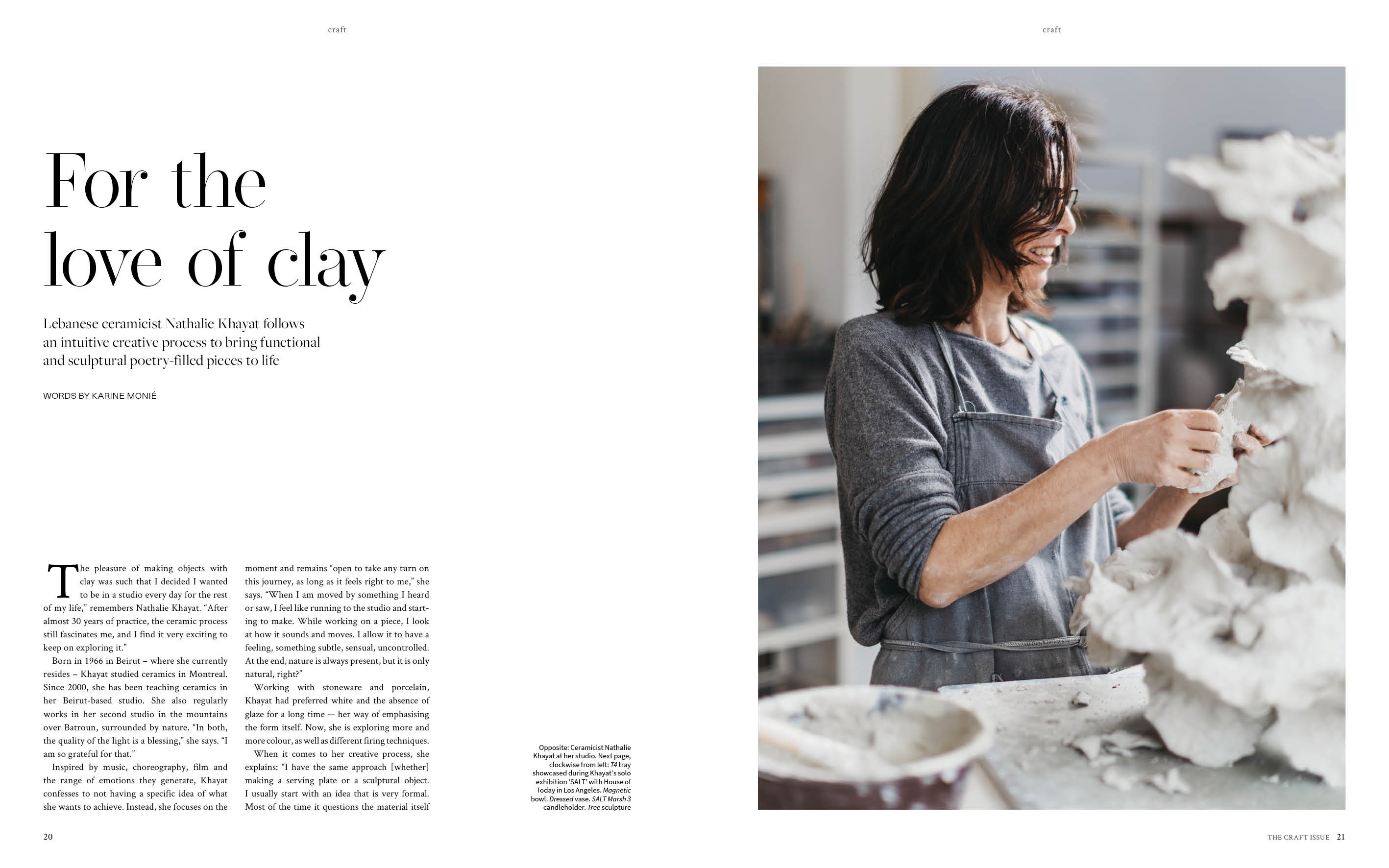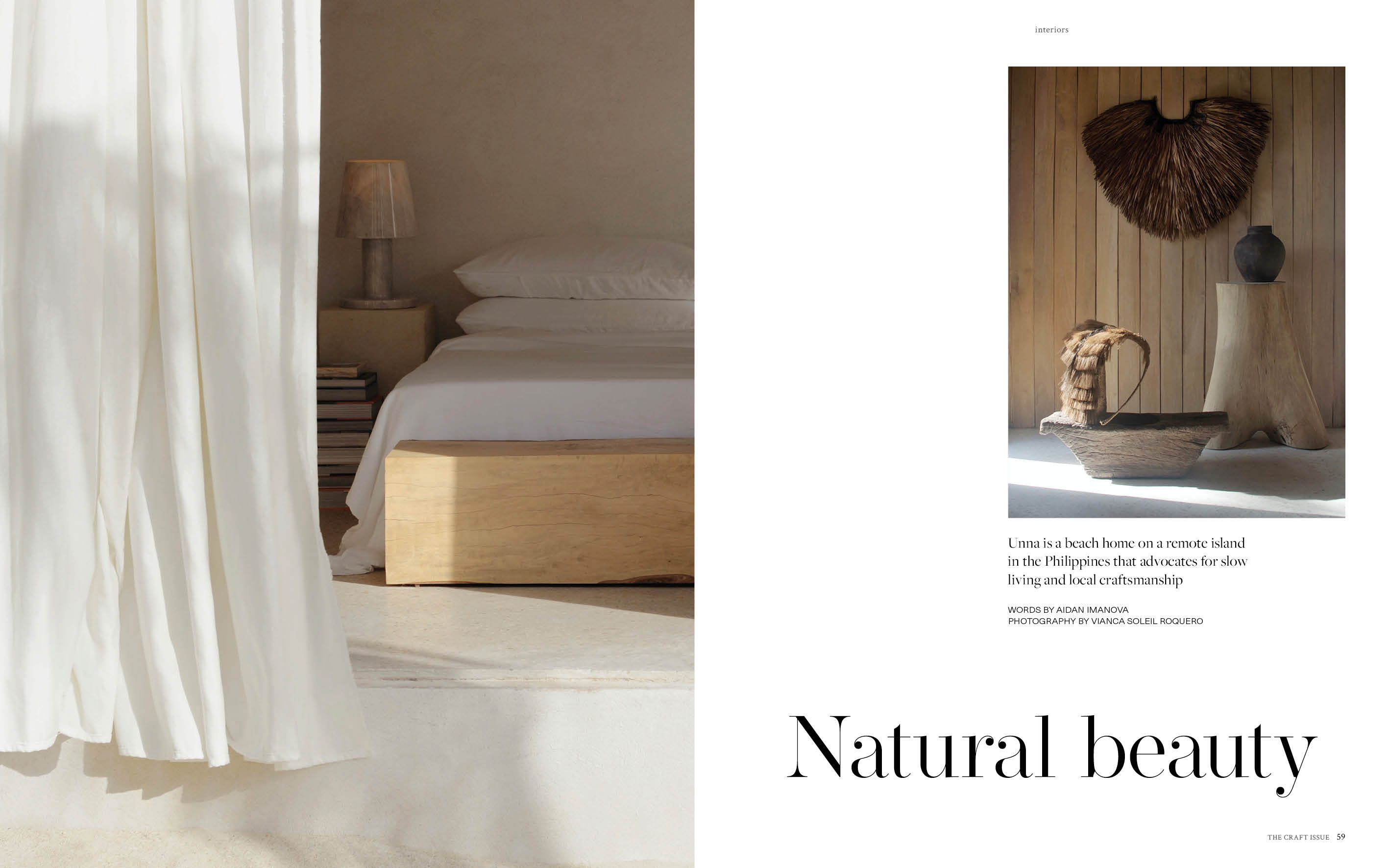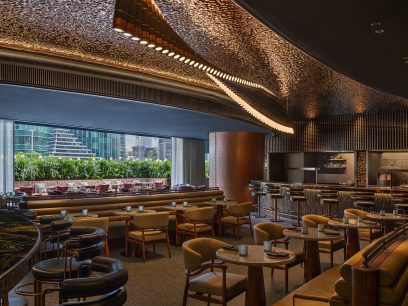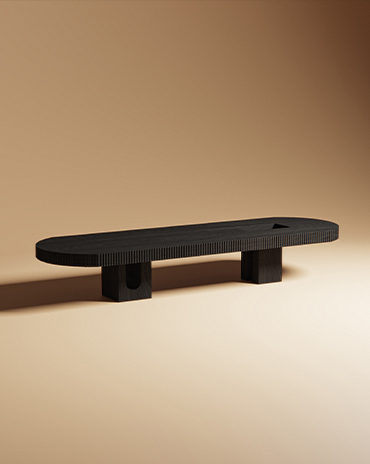Copyright © 2025 Motivate Media Group. All rights reserved.
Read ‘The Craft Issue’ – Note from the editor
Read identity's April 2023 issue on ISSUU or grab your copy

I am sure by now it is no secret how highly I value craft and its role in preserving knowledge, supporting communities, advocating for slower living and thinking creatively about the future.
This is why the relationship between an artisan and a designer is so special: each one enriches the other in the beauty of what was and what could be. Without the creativity and risk-taking nature of the designer, the artisan is bound by the past; and without the intricate skill set of the artisan, a designer’s vision may sometimes be just that. The convergence of the two worlds is what has brought to light some of the most enlightening pieces of design. As Italian automotive designer Giorgetto Giugiaro once said: “It wasn’t an architect or a designer who invented objects, but an artisan.”

Our cover this month features Egyptian-Australian designer Yasmine Saleh Ghoniem’s – founder of Sydney-based YSG Studio – first collection for handcrafted rug brand Tappeti, titled ‘Real Majik’; a celebration of her heritage that is inspired by Egypt’s pharaonic past.
The 12-piece collection features combinations of art silk [artificial silk], hemp, Tibetan highland wool and nettle, which make up the intricate hand-knotted rugs, revealing an exquisite level of pattern detailing.
“I am impressed with the way Tappeti weaves ethics and environmental sustainability into their business,” Ghoniem told me. “Traditional makers in India and Nepal produce each piece using time-honoured looming and tufting techniques, and are paid fair wages, enabling them to work amongst their traditional community.”

In other parts of the magazine, Lebanese ceramicist Nathalie Khayat reveals her artisanal process, which is less technical and more intuitive: “When I am moved by something I heard or saw, I feel like running to the studio and starting to make,” she tells identity. “While working on a piece, I look at how it sounds and moves. I allow it to have a feeling, something subtle, sensual, uncontrolled. At the end, nature is always present.”

In this issue, I also chatted to interior design and architect Vianca Soleil Roquero, whose beach home in a remote island in the Philippines I had seen on Instagram a year ago and been keen to feature. Called Unna, the home-turned-mini resort embodies everything one can hope for when adopting a slower pace in life: using natural materials, working with one’s local community and allowing nature fully into your life.
“I challenged myself to somehow unlearn the approach I was used to back in the city, [moving] from being too technical and by-the-book to [taking] a more nonchalant and intuitive approach,” Roquero shared. “My idea was to go back to the basics by building like an island local, to embrace beauty in restraint but also leave some room for playfulness.”

While many of us are busy being caught up in the blur of fast-paced city life, paying attention to craft can help one learn how to slow down and appreciate the present moment.
The Latest
From Private to Public
How ELE Interior is reshaping hospitality and commercial spaces around the world – while staying unmistakably itself
New Episode: In Design With: Ahmed Bukhash
Watch the latest episode on In Design With.
Highlights of the Biennale Architettura 2025
We shine a light on the pavilions from the Arab world at the Venice Architecture Biennale, on display until Sunday 23 November 2025
Read ‘Bold Design’ – Note from the editor – July/August 2025
Read identity magazine's July/August 2025 edition on ISSUU or grab your copy at the newsstands.
Things to Covet in June 2025
Elevate your spaces with a pop of colour through these unique pieces
Designing Spaces with Purpose and Passion
We interview Andrea Savage from A Life By Design – Living & Branding on creating aesthetically beautiful and deeply functional spaces
Craft and Finesse
EMKAY delivers a bold and intricate fit-out by transforming a 1,800 sqm space into SUSHISAMBA Abu Dhabi, a vibrant multi-level dining experience
An Impressive Entrance
The Synua Wall System by Oikos offers modularity and style
Drifting into Summer
Perennials unveils the Sun Kissed collection for 2025
The Fold
Architect Rabih Geha’s collaboration with Iwan Maktabi
From Floorplans to Foodscapes
For Ayesha Erkin, architecture was never just about buildings, but about how people live, eat, gather and remember
















